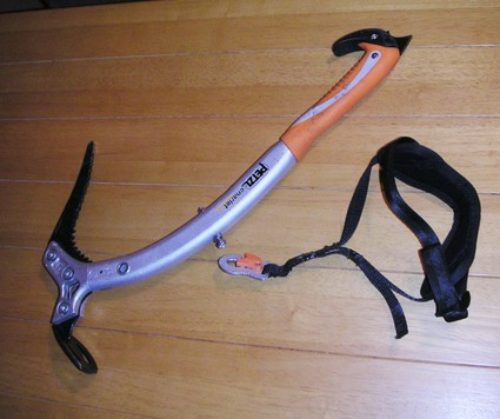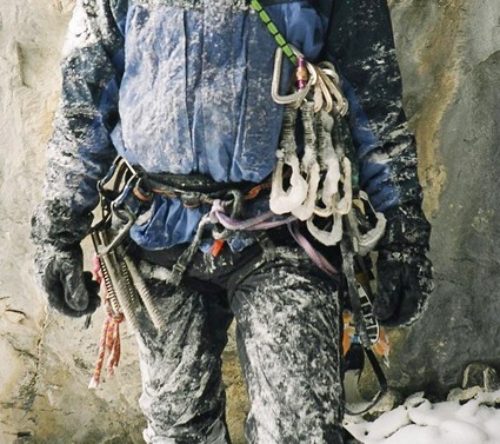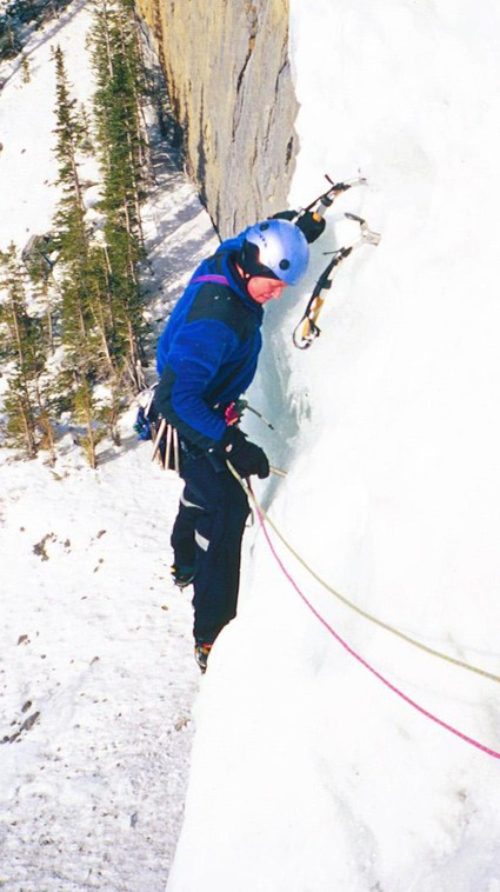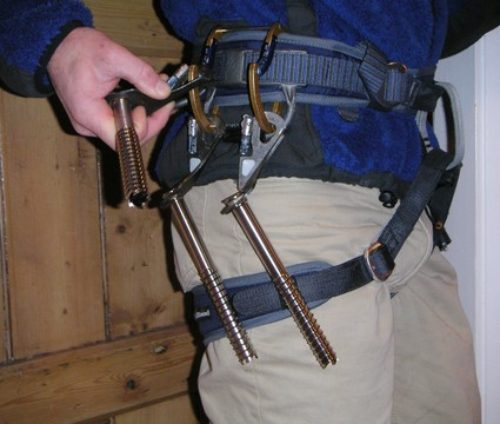Ice Climbing Kit Check by Adrian Nelhams
The gritters have been out and I’ve been scraping my car at least 5 mornings this week, a sure sign that winter’s just around the corner.
Whoever you talk to, the conversation’s the same ‘The Met Office predicts the coldest winter in a decade’, and that must be true as I’ve just heard it again on the radio! With all this in mind, its time to start thinking about getting your winter kit sorted for those cold winter forays.
Firstly have a look at your ice axes, and make sure they’re in good condition and check all the nuts and bolts. If you’re changing the pick then sometimes it’s a good idea to replace the nuts as some have nylon threads.
Check your leashes for any wear marks and make sure they’re right for the job. What I mean by that is that, for me, the right leash system is so important. The leashes attach you to your tools so they need to be the right length and comfortable around your wrists. You also need a system, so that when you’re hanging from your axes on steep ice, you can release one hand to place or retrieve an ice screw without using the other. For this reason, clipper leash systems have become very popular as they stay firmly secured around your wrists but when you need to release a hand you can do so by unclipping the whole leash from the shaft. It takes some time getting used to them but they work very well. Just be careful when placing or taking out screws on steep ground and near your head as the leash can tend to whip you in the face!
Clipper leashes are not everyones cup of tea. Some people like a leash which is always secured to the axe when you take out your hand. The main advantage of this is that your hands are left free to place screws and to belay, without the leash getting in the way. It’s also nice to have a leash hanging from your axe when you’re on the lead and placing an ice screw, as if you get pumped very quickly you can clip into it or use it as an interim runner to calm the nerves!
Sharpen your crampons with a fine file so that the teeth are sharp and will bite into the hard waterfall ice. Check they fit your winter boots well and that all the nuts and bolts are tight. Also check that the crampon straps are in good order and with no frayed ends. Nothing worse than trying to thread a frozen frayed strap through two small eyelets with gloves on!
Give your harness a good check over for any bad wear marks and give some thought to how you’re going to rack the ice screws to it. I use a combination of the Simond Rack for my right hand, which is the hand I place most of my screws with, and the plastic Black Diamond clipper with a lightweight wire gate for my left. These systems save you loads of time and energy when racking about 10-12 ice screws and work well. The systems also allow you to clip and unclip ice screws from your harness with one hand, while the other is still holding onto a secure axe placement. Just remember to have a system on both sides of your harness as you can’t always predict where the best ice will be and with which hand you’ll need to place the ice screw. You could also make your own system by tapping a large bent gate karabiner facing downwards to your harness. Clip it through your harness waist band first and then tape it so it doesn’t move and the screws will rack in the end where the gate opens. The ice screw hanger pushes against the gate of the karabiner, opening it allowing you to hook the screw onto the karabiner.
The boots you normally use for winter should be given a good airing and the laces changed if necessary.
Give some thought to your clothing and choose a layering system that will not only keep you warm but also allow you plenty of movement. Gloves are very important in winter and two pairs of thick finger gloves are best. Wear one pair and carry the other, so that when one pair gets cold and wet you can change them and your hands will keep continually warm. Keep the thick pairs for climbing and wear a thin fleece pair on the walk in as if you do sweat in the thick ones you will have cold hands from the word go.
Always carry a small headlamp in your rucksack as the days are shorter in winter and plenty of food which you can carry in a pocket and eat on the belays.
Take a fleece hat that fits comfortably under your helmet and carry a pair of sunglasses, as generally the best ice in cold temperatures will be found in the sun.
The main thing with all your kit is that you know how it all works and that it's all well sorted, as the more organised you are with your leashes, racking your ice screws etc. the easier, less pumped and warmer, and safer you’ll be.
Now with all my own kit sorted I’m even more excited about the coming winter and getting out there climbing. Must go now as I’m up early tomorrow in search of some steep white stuff!




Related News Articles

ISM Virgin Peaks Expedition 2024 - Tien Shan Kyrgyzstan
ISM trip report of our trip into a very remote part of the Tien Shan Mountains, Kyrgyzstan
Read Article
Getting Into & Developing Your Climbing
Indoor bouldering is a great place to start if you want to try climbing for the first time. You can…
Read Article
ISM Virgin Peaks Expedition 2023 – Tien Shan Kyrgyzstan
ISM trip report of our trip into a very remote part of the Tien Shan Mountains, Kyrgyzstan.
Read Article
Kyrgyzstan Faces 2022
This year ISM celebrated 25yrs of expedition climbing in Kyrgyzstan, with a fantastic trip to the Fergana Range in the…
Read Article



